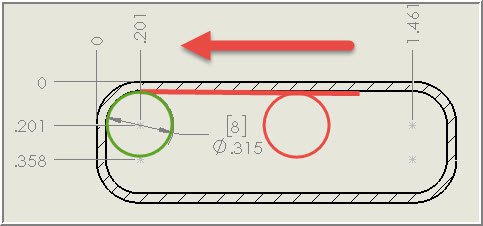- Joined
- Nov 18, 2012
- Messages
- 1,352
CrossSlide with out knowing the design intention of the pocket. The quickest way to mill a pocket is with the largest diameter ball nose endmill the design will allow. Large diameter shorter end mills have more stiffness and the ball nose endmill doesn't have have those "delicate" sharp edges or corners.
Absolutely suck those chips out while you are going. If the pocket does require a sharp corner at the bottom then follow up with a square end two flute.
David
Absolutely suck those chips out while you are going. If the pocket does require a sharp corner at the bottom then follow up with a square end two flute.
David


